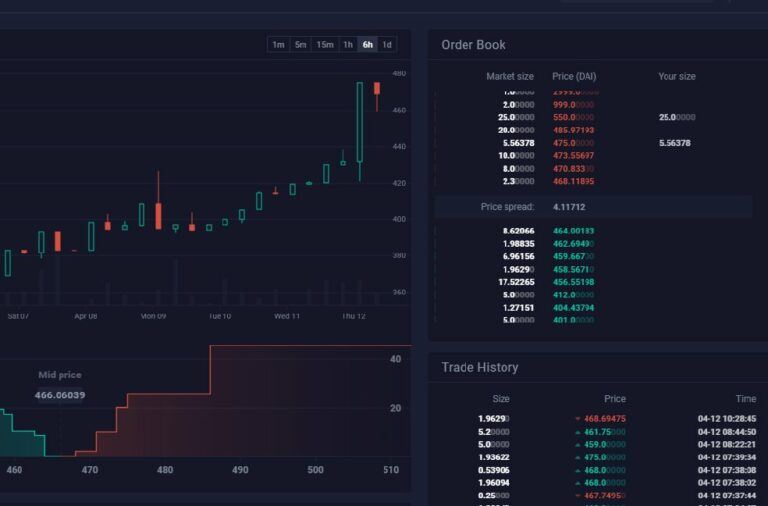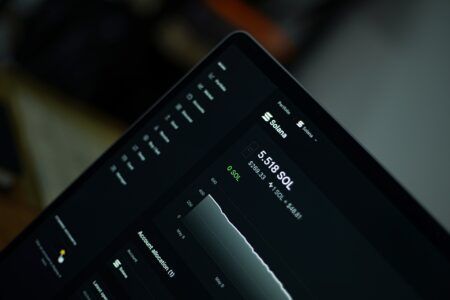On Wednesday, Coinbase, one of the largest centralized crypto exchanges in the world, announced that it had acquired a one-year-old small decentralized exchange startup called Paradex, which supports peer-to-peer (P2P) ERC20 token trading, and that it was going to integrate, over the next several weeks, Paradex’s functionality into the Coinbase Pro platform (which was launched on the same day).
Here is how Brian Armstrong, Coinbase co-founder and CEO, wrote about this acquisition on the official Coinbase blog:
“We’re thrilled to announce the acquisition of Paradex, a relay platform that will allow our customers to trade hundreds of tokens directly from their wallets. The move not only reinforces Coinbase’s commitment to investing in decentralized infrastructure and participating in the nascent world of wallet-to-wallet trading, but also our focus on the international crypto trader. After making some product enhancements, we’ll initially offer this experience to customers outside the U.S., and eventually to U.S.-customers.”
To understand this deal better, we first need to take a closer look at what Paradex does and how it came into existence.
It all started on 3 October 2017, when a small smartup called Paradex introduced itself to the world via a post on its official blog on Medium. The Paradex team explained that they were trying to build a token trading tool that combined “the speed & power of traditional trading” with “the safety & trustlessness of decentralization.” The product that they had been working on since May 2017 was “a robust, peer-to-peer relay where users from all parts of the world” could “buy and sell ERC20 tokens on the Ethereum blockchain in a decentralized fashion.”
This was the most interesting part of the blog post:
“The platform is built on top of the 0x protocol, which provides us with a simple, elegant standard for handling settlement without necessitating user accounts or taking custodianship of users’ funds. This solves the problems of trust and third-party reliance that exist on centralized exchanges, completely removing us as an attack vector. Paradex users maintain absolute control of their tokens right up until the point where their trades are validated and finalized, all while never having to create an account.”
Private beta testing of Paradex began in mid October 2017, and public beta testing (on the Ethereum mainnet) began roughly three months later.
On 17 October 2017, the Paradex team decided to share via another blog post a few details about the architecture of their platform:
“We believe users shouldn’t have to sacrifice traditional trading features for security. Unfortunately, until Ethereum block times scale, we feel that a professional, real-time trading experience isn’t quite practical (at least not yet) in a 100% decentralized system.
Our team saw an opportunity for a pragmatic and hybrid solution, opting to decentralize the most security-critical components of a relay, while relying on the speed and scalability of a traditional, off-chain architecture for everything else.
The Paradex solution allows us to overcome frustrating hurdles like order book contention and isolate ourselves from blockchain deficiencies like slow settlement processing, giving users a snappy trading experience that doesn’t sacrifice speed, functionality or security.”
Here is a screenshot from that blog that gives you an idea of what the Paradex user interface looked like:

Now, let’s take a quick look at what is most interesting about Paradex: the 0x protocol. In short, 0x is “an open, permissionless protocol allowing for ERC20 tokens to be traded on the Ethereum blockchain.” The two main idea of the 0x protocol are “off-chain order relay” and “on-chain settlement”.
Here is how the 0x team explains it: “In 0x protocol, orders are transported off-chain, massively reducing gas costs and eliminating blockchain bloat. Relayers help broadcast orders and collect a fee each time they facilitate a trade. Anyone can build a relayer.”
Another way to look at 0x is as “a pluggable building block for dApps that require exchange functionality.” Here are a few use cases that the 0x team envisions:
- Decentralized governance. (“Decentralized organizations use tokens to represent ownership and guide their governance logic. 0x allows decentralized organizations to seamlessly and safely trade ownership for startup capital.”
- Prediction markets, (“Decentralized prediction market platforms generate sets of tokens that represent a financial stake in the outcomes of real-world events. 0x allows these tokens to be instantly tradable.”)
- Stable tokens (“Novel economic constructs such as stable coins require efficient, liquid markets to succeed. 0x will facilitate the underlying economic mechanisms that allow these tokens to remain stable.”)
- Decentralized loans (“Efficient lending requires liquid markets where investors can buy and re-sell loans. 0x enables an ecosystem of lenders to self-organize and efficiently determine market prices for all outstanding loans.”)
- Fund Management (“Decentralized fund management limits fund managers to investing in pre-agreed upon asset classes. Embedding 0x into fund management smart contracts enables them to enforce these security constraints.”)
Many DApps and relayers have already been built using the 0x protocol. Perhaps, the most well-known DApp that uses 0x is the prediction market platform Augur (REP). As for relayers, in addition to Paradex, there are quite a few, including DDEX, ERC dEX, and Radar Relay, but perhaps Paradex was the most interesting to Coinbase because its user interface most closely mirrored that of Coinbase’s GDAX platform (which got rebranded to Coinbase Pro on 23 May 2018).
In March 2018, while speaking at a panel at the TOKEN49 conference in Hong Kong, Paradex’s CEO, Ron Bernstein, described Paradex and its user interface as follows:
“It is meant to look and feel very much like a centralized exchange, except that it is non-custodial, so users trade in a very familiar fashion, but the assets of each customer remain in their own control up until the moment a trade is transacted, and when it settles on the blockchain, the funds or assets are transacted instantly using the public blockchain for security and verification.”
So, to summarize, Coinbase has acquired Paradex, which is built on the 0x protocol, which is a protocol for trading ERC20 tokens on the Ethereum blockchain. At least, that is what version 1.0 of the 0x protocol was designed to do. However, version 2.0 of the 0x protocol, which the 0x co-founder and CTO, Amir Bandeali, talked about on May 10th at Fluidity Summit 2018, goes a lot further.
The 0x protocol has been upgraded such that it can now easily be modified to support arbitrary new asset types, such as ERC223 and ERC777; out of the box, 0x 2.0 will come with support for ERC20 and ERC721 (an open standard for creating non-fungible or unique tokens). And since more and more assets in both the real world and in virtual worlds are getting “tokenized” to take advantage of blockchain technology, version 2 of 0x, which is expected to become available in late July 2018, is being described as “the protocol for trading everything.”
So, now, we can see what a smart purchase Coinbase has just made. What it has bought is a decentralized exchange for trading everything. And as you can imagine, the potential implications of this are huge.
All Coinbase has to worry about now is to find a way to integrate the Paradex’s P2P token trading functionality, which initially won’t be available to U.S. customers, into Coinbase Pro whilst satisfying KYC rules (since decentralized exchanges don’t need to know anything about their customers) and to somehow convince financial regulators in the U.S. (and elsewhere) that it is not breaking any securities laws by offering, albeit indirectly, tokens on its platform (since many jurisdictions might consider at least some ICOs as securities).








